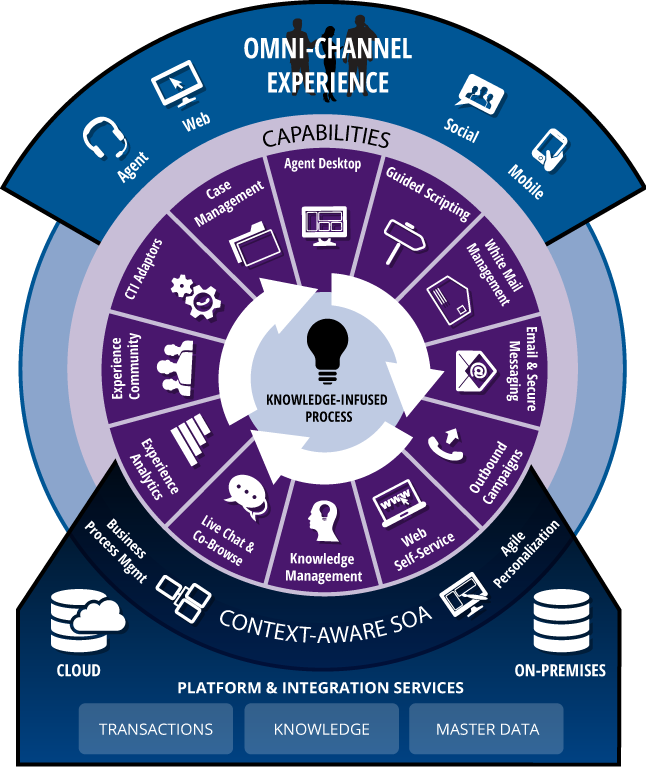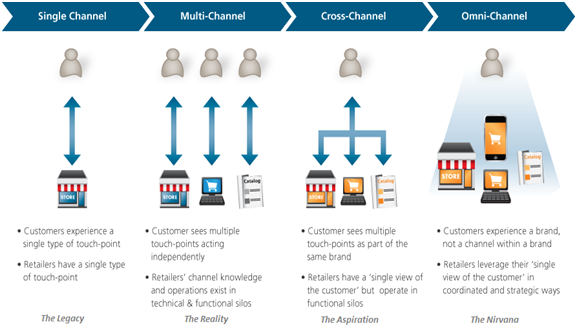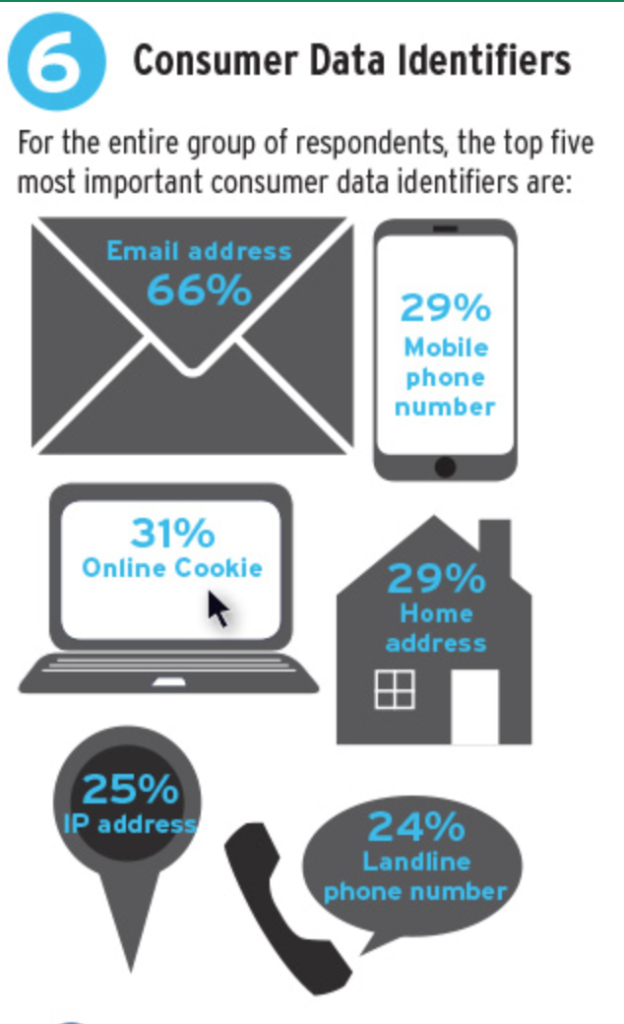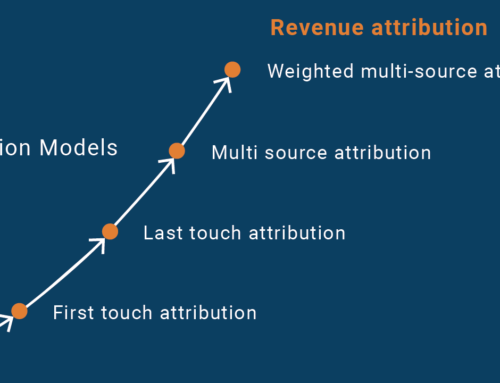Once upon a time the customer journey was simple.
Consumers would see an advertisement, head into a brick and mortar store and buy the product. Simple and effective.
But times change. Technology’s developed, and customer expectations and behaviors have evolved.
The modern customer journey is anything but simple. Customers now average five different devices in their purchase journey. That’s five different points of contact and five times the potential for something to go wrong for the modern marketer.
And that’s just the tip of the iceberg.
The developments in tech have led to more than just an increase in contact points; they’ve caused an evolution in customer expectations. Customers expect brands to utilize every channel and customize messaging for each device.
Buying is no longer a linear path from exposure to purchase. It’s a winding road. One which your customers expect you to make as easily navigable as possible for them. They need a cohesive journey that engages them at every stage and spans every device in their journey.
For that, you need a comprehensive omni channel campaign.
What is Omni Channel Marketing?
You’ve heard of multi channel and cross channel marketing. Surely omni channel is simply another name for the same kind of approach?
Well, yes and no.
The basic concept is quite simple. It aims to reduce friction in the customer journey. In that sense, it is similar to both multi and cross channel approaches.
However, there is one major difference that helps omni channel stand above the rest.
A multi channel experience uses email, social media and a well designed landing page in collaboration with one another. They do work together, but they’re also quite distinct.
Sure they continue the same style of messaging and even utilize similar designs and formats, but when it comes to the crunch, they are independent elements.
This is where omni channel differs.
Omni channel refers to a marketers ability to create a seamless customer experience regardless of how many devices are used or the time taken between individual steps.
It creates a single view of the customer and leverages that view to create a co-ordinated and cohesive journey at every stag for a consistent, simple path.
Let’s take a look at an example.
A prospect navigates to your site’s mobile app while enjoying a drink in a coffee shop. They see a few items that they would perhaps like to purchase, so they place them in their hotlist or save them for later perusal.
Later in the day, they decide to use a tablet to continue their research. This time, they navigate to your mobile site, but thanks to omni channel marketing they have quick access to the same saved list of products they chose earlier in the day. They don’t need to waste time re entering search terms again. Everything is ready and waiting for them.
Using their tablet they narrow their search and make a final decision on a product that they add to their basket. Unfortunately, they don’t have the card they want to pay with on them so postpone payment until they return home.
And then, they forget.
Two days later when sat at their desktop they receive a cart abandonment email. It highlights the product in their cart and offers an incentive to complete the purchase right now. The shopper, now at their desktop, follows the emailed link back to your site to complete the purchase.
The above simple journey spans three devices and four channels (mobile app, mobile site, email and desktop). None of these steps are independent from the rest. They are in fact all working together to create one cohesive customer journey across all contact points.
The best omni channel marketing campaigns aren’t focused on creating a new business or marketing plan. They’re focused solely on the customer and what steps can be taken to ease their journey and reduce friction for them.
Omni channel is about improving the customer experience, so you need to view it from their point of view. Customer experience is becoming increasingly more important in modern marketing and by taking this approach, you should see a healthy lift in conversions.
It’s an incredibly complex strategy, but it can really pay off in the long run. Here’s a few tips to get you off to the best start.
Measure Everything
Ironically creating a super simple customer journey is one of the most complex things a marketer can take on.
You’re going to need a hell of a lot of data to effectively implement and optimize your campaign.
Knowing exactly what to track and which data is useful isn’t easy. In addition, to the analytics statistics you’re already tracking you’ll want to understand how users interact with your brand across different channels.
Keep an eye on:
- Device usage
- How and where people switch device or channel. Is it good for the overall journey or is it adding unnecessary friction? Why are they switching?
- Channel popularity
- Look at different stages to better target your messaging. Are top funnel prospects more active on mobile or desktop? Do app users convert at a higher rate? Test messaging at different stages to see what increases key metrics.
- Location
- Location specific deals are great (more on that later). Do certain cities/areas convert better? Can you change your messaging to even things out?
Of course, this wouldn’t be modern marketing without a steady focus on customer personalization. Keeping an eye on your regular analytics as well as customer progression through each channel is only part of the battle.
To get the most out of your campaign, you’ll also want to be able to identify segments and individual.
Neustar lists the below as the most important data identifiers for an omni channel campaign.
With omni channel, it’s not just about filling the usual demographic data criteria or tracking normal metrics. You also need to know about the different device and channel usage to properly segment your audience and tailor your messaging.
The ability to leverage your data is key to implementing any kind of successful marketing campaign. Omni channel is more complicated than most marketing methods and needs a greater deal of data to make it work effectively.
Messages that Address Use Case and Behaviors
Messaging is the key to success in marketing, and nowadays nothing gets your messages converting like a solid personalization strategy.
Consumers don’t want general messages. The content you push to your customers, whether it be through email, social media or even blog post format, needs to represent their needs and the actions they’ve taken on your site.
Take cart abandonment for example. It’s a great look at omni channel marketing done right.
A customer starts their journey on your website and adds an item to their cart. When they don’t buy, they receive a personalized email that pertains directly to the items they’ve added to their cart.
This approach always pertains to one particular purchase journey but spreads itself across multiple platforms and channels.
Of course, you don’t have to wait until a customer abandons their cart to personalize messages based on behavior. Examine your site to see if you can also exploit some cross selling opportunities:
- Browsing habits
- Does an individual have a habit of looking at a particular category or sub set of products? Would that help you create more personalized messages based on their interests
- Purchases made
- A customer has just bought a new pair of jeans from your site. Follow up through email with products like shoes, belts or other complementary products often sold with those jeans.
Map as much data as you can from each of your prospects. If you can drill down to their purchase history, browsing habits, device usage, and preferred channel you have all the basics for hitting them with a message that hits the mark through the channel they’re most comfortable using.
Don’t Limit Tracking to Behaviors
Behaviors are important, but they’re not the only step to creating personalized messages that work across devices and channels.
Traditional demographic data like age and gender will help you better understand your segments. But modern tech presents a number of excellent opportunities for you to create a better image of your prospect and create messaging that really appears to them on the channel they’d most prefer.
Social data is particularly effective at giving a better image of your consumers. Rebecca Harris, GM’s head of social media strategy had this to say on the matter:
“A lot of it is about being able to provide a better service for our customers. If we can plug social into all the other CRM data we have, then we have a full portfolio on the customer: If we know the VIN — if we know their name, if we know their Twitter handle, if they like to go to the dealership or they don’t like to go the dealership — it helps us treat them in a way that they want to treated.”
And that’s what it’s about. Treating the customer in a way they want to be treated. Identifying their key frustrations and changing your approach to better address them across all channels and devices.
Internal and External
Yes, you need to focus on how your omni channel campaign affects your customers more than how it affects your business. That doesn’t mean, however, that you can completely overlook the internal implications after the implementation of the campaign.
You’re looking to achieve a cohesive journey between every step of your marketing campaign. That means across every single channel, not just the digital channels every online marketer is always harping on about.
You need to address your organizational structure and look at how your omni channel approach affects in store behaviors. For most retailers this change will manifest in a closer working relationship between both your online and in store teams.
Macy’s has one of the best examples of this approach to omni channel marketing I’ve seen.
https://www.youtube.com/watch?v=L62N0XOsmgU
As mentioned in the video, it’s all about creating the best customer service possible. Macy’s have managed to successfully bridge the gap between digital and in store through the smart use of inventory reports and mobile’s GPS functionality.
Examine the way your customers interact with your business. Identify the overlap points between digital channels as well as the digital and in store behaviors. Once you know, the overlaps look at how you can amend your internal business practices to better answer customer’s omni channel behaviors.
Test and Review
It wouldn’t be marketing if there wasn’t any need for testing.
The first concern for you as the marketer will, of course, be the ability to increase conversions. That’s a given.
The normal approach to conversions will of course apply. You’ll need to monitor, analyze and optimize everything including:
- CTRs
- Conversion rates
- Abandonment
- Customer progressions
Basically, everything you’d monitor in any campaign you’d run.
However, you’ll also need to test how your customers view your campaign in general. This is going to require you to walk through the campaign and put it into real life test situations to see if everything is working as it should be.
View your campaign through the eyes of your customer. Test the experience by:
- Placing orders
- Testing interaction through each channel
- Checking the accuracy between online and in store cooperation
If there’s something that can’t be monitored from your data analytics you need to get out there and test it yourself. Even better than testing it yourself is to have a friend or family member run through the process to give honest feedback. Also, consider the use of heat map software to know how users are interacting with each stage.
Keep an eye out for any barriers that mar the experience or cause unnecessary problems for those going through the process.
It’s all About Creating One Customer Journey Across all Platforms and Channels
At its core omni channel marketing is about creating a better experience for your customers.
We know that they want to use different devices and channels for their purchases, and we need to adapt to this developing behavior. It’s a tricky thing to achieve, but if you take the basic steps below then you should be off to a good start:
- Measuring everything
- Utilizing use cases and behavior to tailor messaging and delivery
- Create a full portfolio on the customer
- Align your internal practices with customer behaviors
- Test, test and test again
Consumer behavior seems to be forever changing. Our job as marketers is to follow the trends and adapt our practices as best we can to appeal to the latest developments.
Omni channel marketing is simply the latest development in marketing that appeals to the desires of the customer at large. Ignore it at your peril!








